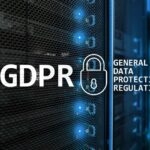Is Pseudonymised Data Personal Data? Understanding the fine line between pseudonymised data and personal data is more crucial than ever. As organisations harness vast amounts of information to enhance services, questions inevitably arise around privacy, compliance, and ethics.
Is pseudonymised data, designed to obscure individual identities, truly classified as personal data, or does it enjoy a different legal status?
This article explores the legal frameworks, ethical dimensions, and practical realities of pseudonymisation, revealing how its nuances shape data management strategies and individual rights.
By unpacking these implications, we aim to clarify ongoing debates among policymakers, corporations, and consumers — ensuring a clear understanding of this pivotal issue in today’s data-driven landscape.
Understanding Pseudonymised Data
Pseudonymised data refers to information processed so that it can no longer be directly attributed to an individual without additional information. That extra information is stored separately under strict technical and organisational safeguards. In short, pseudonymisation replaces personal identifiers with artificial tags or pseudonyms.
The goal is simple: reduce privacy risks while preserving analytical value. For example, in medical research, pseudonymisation enables the study of patient data without disclosing identities. Yet, because the process is reversible, re-identification remains possible if pseudonyms are matched with the original dataset.
For businesses and organisations managing large datasets, pseudonymisation offers a layer of protection, but it also creates responsibility. Safeguards must ensure the separation of keys and identifiers, balancing data utility with privacy protection. This balance lies at the heart of the debate over whether pseudonymised data should be legally treated as personal data.
The Legal Definition of Personal Data
Under the General Data Protection Regulation (GDPR), personal data includes any information relating to an identified or identifiable natural person. This wide-ranging definition covers names, ID numbers, online identifiers, biometric data, and much more.
The significance of this definition lies in compliance:
Personal data must be processed lawfully, fairly, and transparently.
Organisations must collect data for clear, legitimate purposes.
Data subjects enjoy rights such as access, erasure, rectification, and portability.
Now, here’s the crux: pseudonymised data is still classified as personal data under GDPR. Why? Because the potential for re-identification remains. This legal classification imposes strict obligations on organisations to treat pseudonymised datasets with the same care as directly identifiable data.
Key Regulations Affecting Pseudonymised Data
Several major frameworks impact pseudonymised data:
GDPR (EU/UK) – Explicitly defines and encourages pseudonymisation as a protective measure (Article 4). While not exempting organisations from obligations, it reduces risk exposure.
California Consumer Privacy Act (CCPA) – While not defining pseudonymisation directly, it grants consumers control over personal data and mandates safeguards.
HIPAA (US healthcare law) – Differentiates between de-identified and identifiable medical data. Pseudonymised records fall under stricter privacy rules.
Together, these frameworks highlight the growing global emphasis on safeguarding data, with pseudonymisation often encouraged but rarely seen as sufficient on its own.
Differences Between Anonymised and Pseudonymised Data
A frequent source of confusion is the difference between anonymisation and pseudonymisation:
| Feature | Anonymised Data | Pseudonymised Data |
|---|---|---|
| Identifiability | Irreversible | Reversible with a key |
| Legal Status under GDPR | Not personal data | Still personal data |
| Privacy Protection | Stronger | Moderate |
| Utility | Often reduced | Maintained |
In essence, anonymisation is permanent, stripping away all identifying potential. Once anonymised, data falls outside GDPR. Conversely, pseudonymisation provides a middle ground: greater utility, but with inherent re-identification risks.
Ethical Considerations
Beyond legality, ethics play a vital role in responsible data practices:
Transparency – Organisations should explain how pseudonymisation works and why it is used.
Data minimisation – Only necessary data should be processed.
Informed consent – Individuals deserve clear information and choices.
Security – Strong safeguards must prevent unauthorised re-identification.
Fairness – Data should not be processed in ways that could harm or discriminate.
Adopting these ethical standards not only protects individuals but also builds public trust in data-driven innovation.
Implications for Data Protection and Privacy
Pseudonymisation carries several important consequences:
Safeguards are essential – encryption, restricted access, and audits.
Data sharing requires caution – pseudonymisation enables collaboration, but risks must be carefully assessed.
Data subject rights must be respected – organisations must be able to re-link pseudonyms if individuals exercise their rights under GDPR.
In short, pseudonymisation helps manage risk but is not a substitute for compliance.
Case Studies: Pseudonymised Data in Action
Healthcare research – Institutions pseudonymise patient data for disease tracking and treatment analysis while keeping identifiers secure.
Financial services – Banks pseudonymise transaction data to detect fraud without exposing customer identities.
Technology firms – Tech companies pseudonymise usage data for product development and AI training.
Each example demonstrates pseudonymisation’s value as a privacy-enhancing yet practical tool.
Best Practices for Handling Pseudonymised Data
Organisations should adopt the following best practices:
Implement robust security (encryption, access control, separate storage).
Establish clear policies for pseudonymisation and data re-identification.
Provide transparent privacy notices to individuals.
Conduct regular audits and update practices to meet evolving threats.
Align with emerging data governance standards across jurisdictions.
Future Trends in Data Privacy
Looking ahead, pseudonymisation will be shaped by:
Stricter minimisation rules – Only essential data may be collected.
Accountability and transparency mandates – More detailed documentation of pseudonymisation processes.
AI-driven regulation – New requirements for pseudonymised training data in AI/ML systems.
Cross-border data rules – Stronger safeguards for international transfers.
Organisations that prepare now will be better equipped to adapt to these evolving legal landscapes.
Conclusion: Navigating the Complexities
Pseudonymisation offers a powerful balance between privacy and utility, but it comes with legal, ethical, and practical complexities.
Legally, it remains personal data under GDPR.
Ethically, it demands transparency, consent, and robust protection.
Practically, it enables innovation across healthcare, finance, and technology.
For organisations, the challenge is to embrace pseudonymisation responsibly, combining compliance with ethical stewardship. Doing so not only protects individuals but also unlocks the full potential of data-driven innovation in a digitised world.
FAQ
1. Is pseudonymised data considered personal data under GDPR?
Yes. Under GDPR, pseudonymised data is still considered personal data because it can be re-identified with additional information. Therefore, it remains subject to full data protection obligations.
2. What is the difference between pseudonymised and anonymised data?
Pseudonymised data can be re-linked to an individual using a key, whereas anonymised data is irreversibly stripped of identifiers. Anonymised data is no longer considered personal data, but pseudonymised data is.
3. Why is pseudonymisation important in data protection?
Pseudonymisation reduces privacy risks while maintaining data utility. It helps organisations process data for research, analysis, and innovation while minimising the chances of unauthorised identification.
4. Does pseudonymisation exempt organisations from GDPR compliance?
No. Pseudonymisation is encouraged as a security measure under GDPR, but it does not exempt organisations from compliance obligations such as data subject rights, lawful processing, and accountability.
5. How can organisations protect pseudonymised data?
Organisations should use encryption, access controls, separate storage of keys, and regular audits. They must also implement clear policies, train staff, and ensure transparency with data subjects.
6. What are some real-world examples of pseudonymised data use?
Healthcare institutions pseudonymise patient records for research, banks use pseudonymisation in fraud detection, and tech companies apply it in AI model training — all to protect privacy while enabling innovation.












